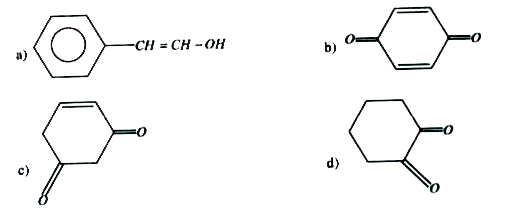PCl5 in solid state exists as PCl+4andPCl−6 and also in some solvents it undergoes dissociation as 2PCl5⇔PCl+4+PCl−6
Which statement is wrong ? Solution in Telugu
Solution assumes colour of Hin when pKIn+1
Solution assumes colour of In− When pH =pKIn−1
Solution assumes colour Hin when pH =pKIn+1
Solution assumes colour of In− when pH =pKIn−1
The correct Answer is:C, D
When pH>PKIn+1, colour of In−
When pH<PKIn−1, Colour of Hin
Topper's Solved these Questions
- IONIC EQUILIBRIUM BOOK - AAKASH SERIESCHAPTER - IONIC EQUILIBRIUM EXERCISE - ADDITIONAL PRACTICE EXERCISE (LEVEL -II LECTURE SHEET (ADVANCED) (Linked Comprehension Type Questions))
10 Videos
- IONIC EQUILIBRIUM BOOK - AAKASH SERIESCHAPTER - IONIC EQUILIBRIUM EXERCISE - ADDITIONAL PRACTICE EXERCISE (LEVEL -II LECTURE SHEET (ADVANCED) (Matrix Matching Type Questions))
2 Videos
- IONIC EQUILIBRIUM BOOK - AAKASH SERIESCHAPTER - IONIC EQUILIBRIUM EXERCISE - ADDITIONAL PRACTICE EXERCISE (LEVEL -II LECTURE SHEET (ADVANCED) (Straight Objective Type Questions))
24 Videos
- HYDROGEN AND ITS COMPOUNDSBOOK - AAKASH SERIESCHAPTER - HYDROGEN AND ITS COMPOUNDSEXERCISE - QUESTIONS FOR DESCRIPTIVE ANSWERS
20 Videos
- ISOMERISM BOOK - AAKASH SERIESCHAPTER - ISOMERISM EXERCISE - ADDITIONAL PRACTICE EXERCISE ( PRACTICE SHEET (ADVANCED) INTEGER TYPE QUESTIONS)
10 Videos
Similar Questions
100 ml 0.1 MH3PO4 solution is being titrated with 0.1 M NaOH solution. The pH of the reaction mixture keeps increasing with addition of NaOH. The successive dissociation constant of H3PO4 are 10−3,10−6and10−14 respectively.
How much volume of the given NaOH must be added such that a buffer H2PO−4/HPO−24 of maximum capacity is formed.
View SolutionWhen Na2CO3 aqueous solution is being titrated with hydrochloric acid
Column-I Column-II(A) At the start of titration(P) Buffer solution of HCO−3andCO−23(B)Before the first equivalent point (Q)Buffer solution H2CO3andHCO−3(C)At the first equivalent point(R)Amphiprotic anion pH=(1/2)(pka1+pKa2)(D)Between first and second equivalent points(S)Hydrolysis of CO−23
View SolutionA 25.0ml sample of 0.1 M HCl is titrated with 0.1 M NaOH . What is the pH of the solution at the points where 24.9 and 25.1 ml of NaOH have been added ?
View SolutionWhy the use of hard water is disadvantages?
View SolutionTautomerism is exhibited by X number of compounds among the following. What is X.

View SolutionAsserartion:PCl5 is covalent in gaseous and liquide states but ionic in solid state.
Reason: PCl5 in solid state consits of tetrahhedral PCl+4 cation and octahedral PCl−6 anion.
View SolutionIn a polar solvent, PCl5 undergoes an ionization reaction as :
2PCl5⇔PCl+4+PCl−6
What are the geometrical shapes of the species involved in the equilibrium mixture ?
View SolutionAssertion : PCl_(5) is covalent in gaseous and liquid state but ionic in solid state. Reason: PCl_(5) in solid state consists of tetrahedral PCl_(4)^(+) cation and octahedral PCl_(6)^(-) anion.
View SolutionIn solid PCl_(5) exist as [PCl_(4)]^(+) [PCl_(6)]^(-) . The hybridisation is P is /are
View Solution(a) In a polar solvenbt ,PCl5 undergoes an ionization reaction as follows : 2PCl5⇔PCl+4+PCl−6 Wht will be the geometrical shape of each
species present In the equalilbrium maxture ?
(b) Why does PCl5 exist as [PCl4]+[PCl6]− ?
View SolutionIn a certain polar solvent, PCl_(5) undergoes ioonisation as follows: 2PC l_(5) hArr PCl_(4)^(+)+PCl_(6)^(-) , predict geometrical shapes of all the species involved.
View SolutionIn a certain polar solvent, PCl_(5) undergoes ioonisation as follows: 2PC l_(5) hArr PCl_(4)^(+)+PCl_(6)^(-) , predict geometrical shapes of all the species involved.
View SolutionIn the gas phase PCl5 exists as individual molecules but in the solid it takes on the ionic structure PCl+4PCl−6. What are the geometries of these three species?
View SolutionIn the soild state , PCl5 exists in the lonic form as [PCl4]+[PCl6]−. What are the shapes of these two ions ? Why ?
View SolutionWhy does PCl5 exist as [PCl4]+[PCl6]− in the crystalline state?
View SolutionIn solid state \(PCl_{5}\) exists as ionic solid \([PCl_{4}]^{+}\)[\(PCl_{6}^{-}\)] ,in which \([PCl_{4}]^{+}\)is the cation and \(PCl_{6}^{-}\) is the anion.The geometry of cation and anion respectively are
View Solution
